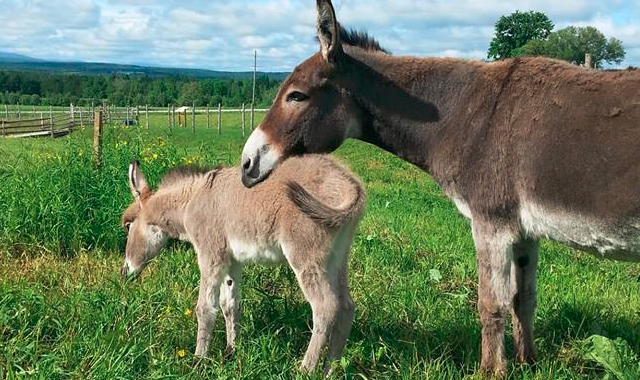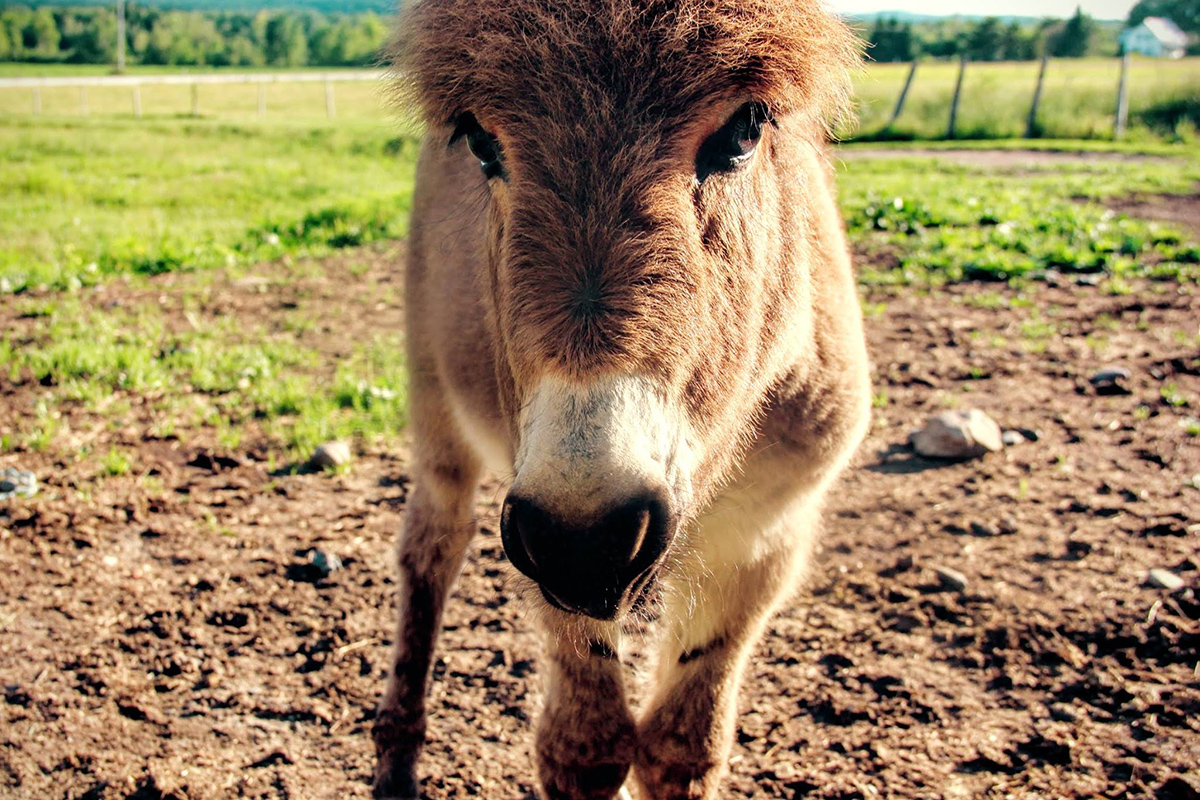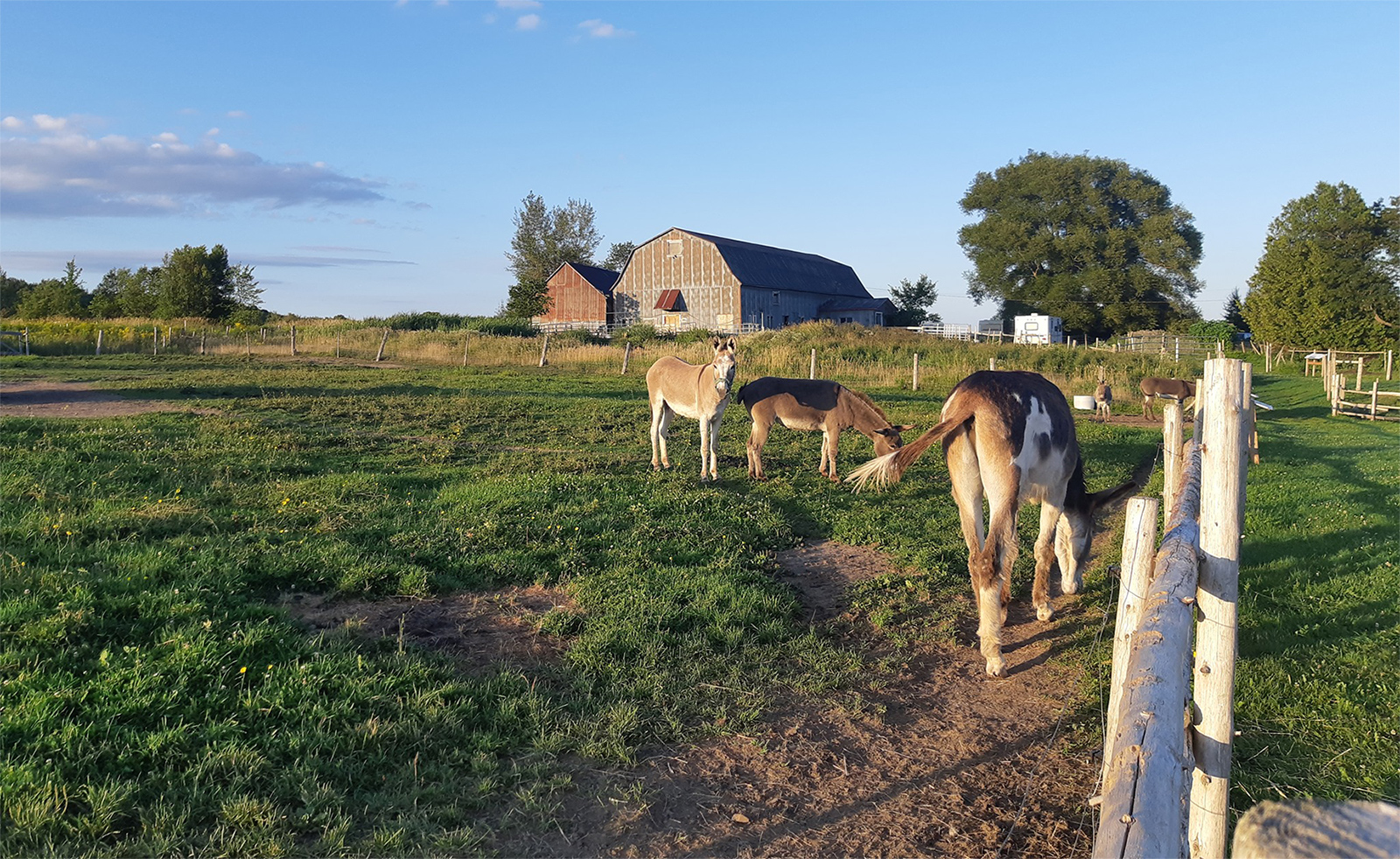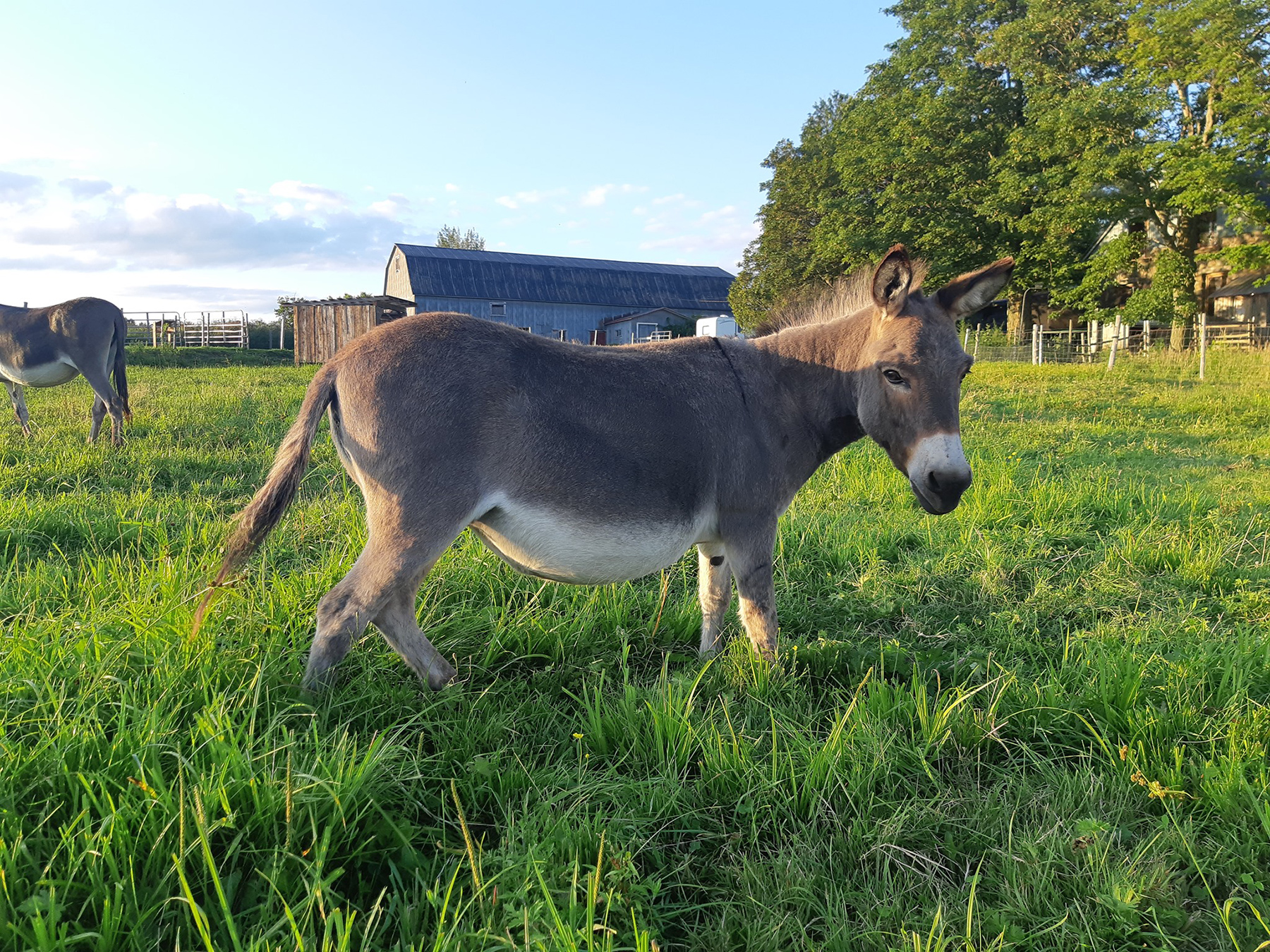-
Visit our donkey farm!
-
Soaps, creams and other cosmetics from natural ingredients
-
Welcome to the website of our family-run donkey farm
-
What is donkey milk?

Producing donkey milk
Donkey gestation
Female donkeys (called “jennies”) reach sexual maturity between 1 and 2 years old, but breeding is not desirable at this age, as their growth is not complete. It is common knowledge among breeders that a 4-year-old jennie can be bred so she will have have her first foal at the age of 5. Males become sexually mature between 1 and 2 years old.
Donkeys are a moderately seasonal species. In latitudes with marked variations in day length, the heat period stops for a few months during the winter; however, this interruption does not occur in all parts of the world.
If uninterrupted, the heat period occurs every 21 days or so, and lasts 7 to 10 days. Gestation lasts about 12 months. A donkey will give birth to a single foal, and only rarely to twins.
Colostral period
During the first 12 to 24 hours after birthing, the milk produced by the mother, called colostrum, allows her to pass on the immunoglobulins that will give the foal a degree of immunity while it is still developing its own functional immune system. In equines, the placenta is completely impervious to immunoglobulins and does not allow for transferring immunity to the foal before birth. This means absorbing colostrum is crucial to the foal’s survival.
The pre-milking period allowed by donkey-milk farms generally ranges from 15 days to two months. We leave the foal with its mother for two months. To allow the foal and nursing to get off to a good start, no milking is done during this period.
Lactation
Many methods are used, and each farm adapts their protocol to their needs. To be able to collect donkey milk, the mother must be separated from her foal for 3 to 4 hours. At the end of this period, the milk is collected, and then the jennie returns to her foal for the rest of the day.
To ensure proper hygiene during milking, it is important that donkeys be kept in a sufficiently clean space, and brushed on a daily basis. We clean the udder before milking, and wash our hands in the case of manual milking.

There are two milking methods. Manual milking has, of course, existed since the dawn of time. Some choose this method out of conviction, or because their herd’s small size does not justify purchasing and maintaining a machine. Nevertheless, mechanical milking has many advantages. Not only is it very well tolerated by jennies, who get used to the machine after just two or three sessions, but the equipment and settings to use have been researched and are now very well known. This means machine milking is pain-free and has no negative effects on the teats or udder. Milking is also much faster and more hygienic.
Lactation lasts as long as foal nursing. Generally, if a foal is weaned, lactation will stop. The length of the milking period largely depends on the intensity of milking; it can last from 150 to 180 days, on average. It is important to keep in mind that the jennie is simultaneously busy nursing her foal, being milked, and carrying a new foal. This being the case, weaning and stopping milking 8 months after foaling seems to be a reasonable period to allow the jennie to recover its strength.
The foal
Foals are generally weaned between the age of 6 months and 1 year. Sometimes, a mother donkey will spontaneously decide to stop nursing when the foal is old enough. In other cases, human intervention is required to allow the next foal to benefit from a healthy mother. After being separated for a few weeks, the foal can return to its mother in the herd, and will continue to be raised by its fellow donkeys and by humans.
In donkey breeding, females are generally kept so they can become the next generation of dairy animals. Since one male is generally sufficient for a herd of 15 to 20 donkeys, for the most part, young males are castrated and sold as pets, working animals or guard donkeys.






